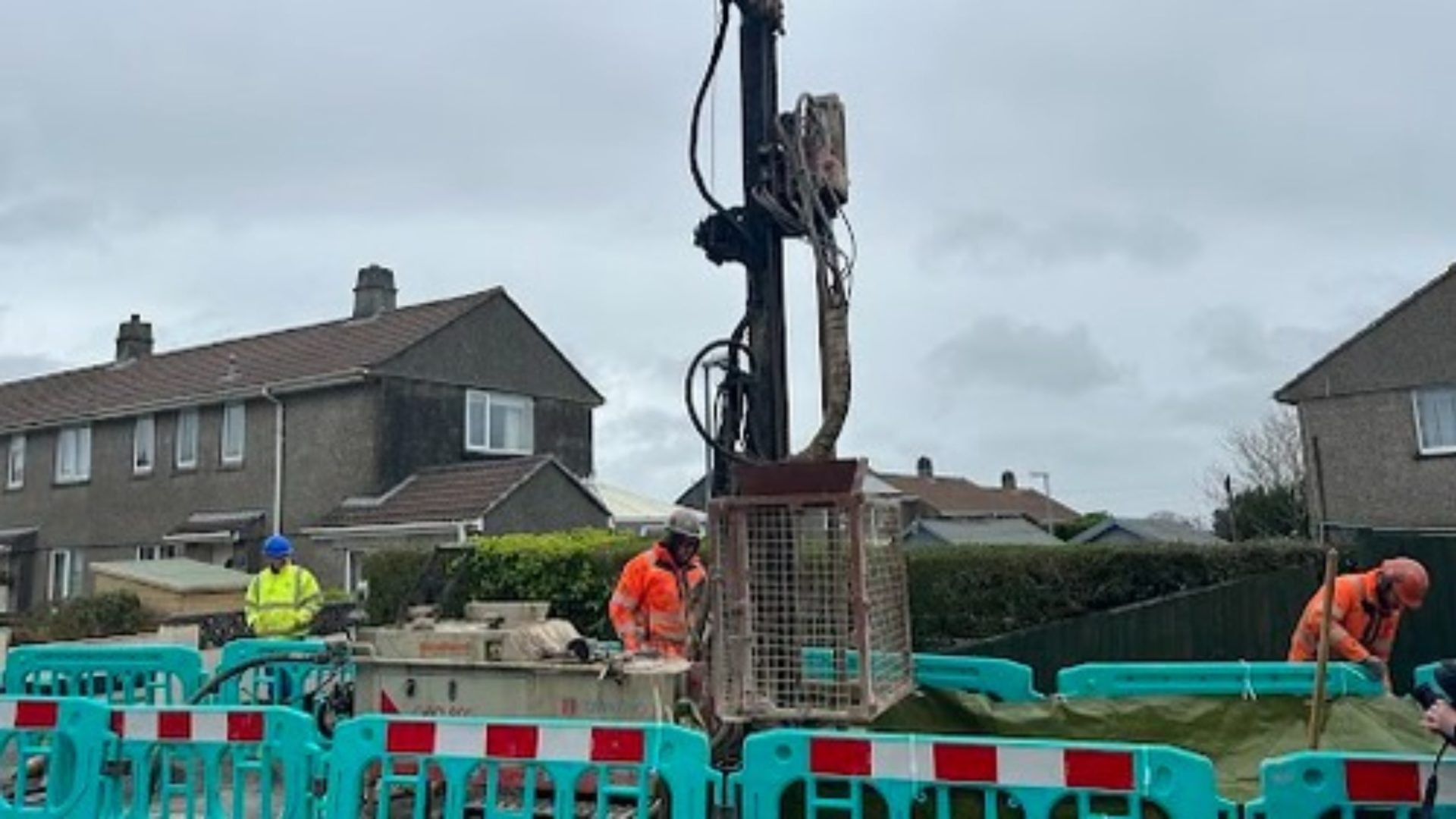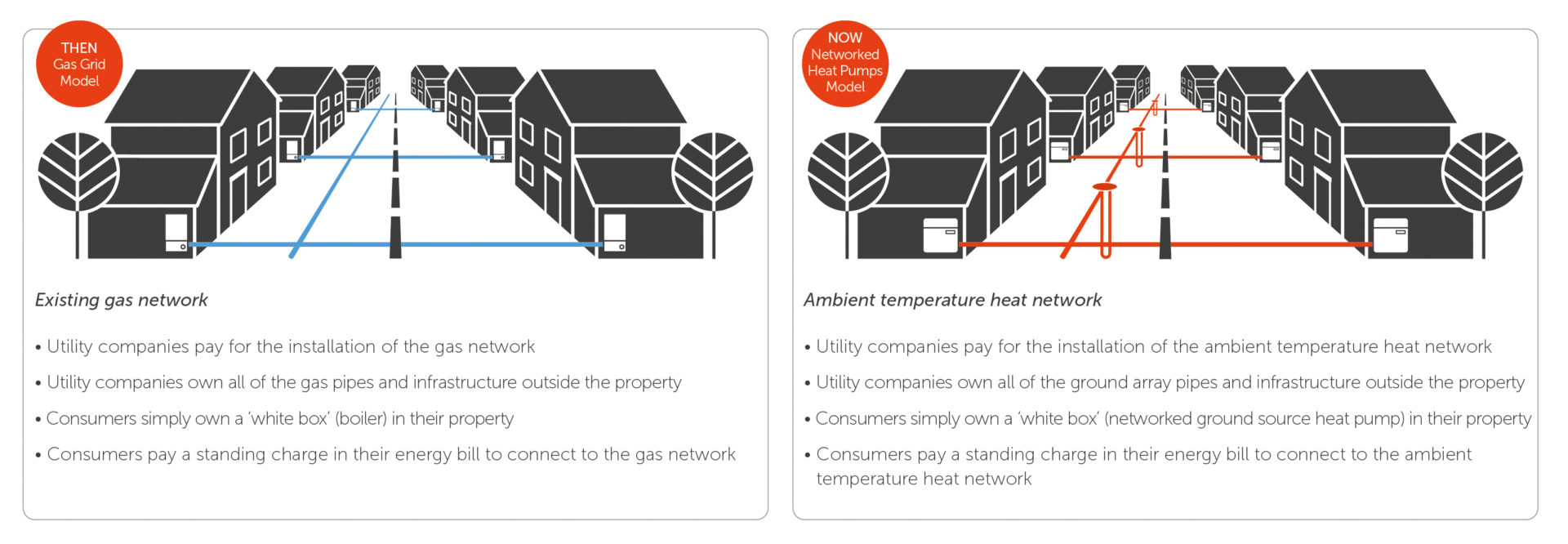
A village in Cornwall is getting its energy from a shared network of ground source heat pumps (GSHP), in what is thought to be the first project of its kind.
A resident of Stithians this week had their ground source heat pump connected to an ambient heat network that will draw energy from under the street.
The initiative is part of Heat the Streets, a two-year project run by heat pump specialist Kensa Utilities and funded by the European Regional Development Fund.
Residents participating in the programme will swap carbon-intensive oil or LPG heaters for a low-carbon Kensa ground source heat pump. This will provide 100% of the property’s heating and hot water.
Homeowners will pay a monthly standing charge to access the heat network, which Kensa says is similar to existing gas connection fees.
The in-road ground source heat pump network, also known as Networked Heat Pumps, will consist of 42 boreholes drilled to an average depth of 106m.
The network allows homeowners to use the heat from the ground to heat their homes and reduce carbon emissions.

Greener homes
The infrastructure mirrors the existing gas grid and is designed to accommodate future connections, allowing households that were not ready to change their heating system to connect at a later date. Customers can also chose their energy provider.
Kensa claims the project will reduce the carbon output associated with heating each home by around 70%.
“Our model replicates the gas network with a pipe in the ground, a flat-rate standing charge to consumers and a little white box in the house,” said Wouter Thijssen, managing director of Kensa Utilities.
“Just as Burton upon Trent was the first UK town to convert to natural gas in 1968 – at the time a cheaper, better, cleaner fuel than towns gas – we believe Stithians is the first UK town to convert to the 21st-century equivalent: networked heat pumps.
“Residents will have access to a network that will provide cheaper and cleaner heat for 100 years to come.”











